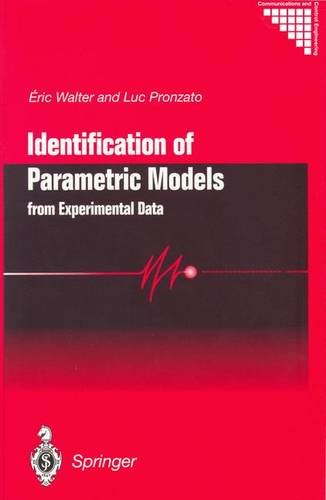Identification of parametric models: from experimental data download
Par arambula jeremy le mercredi, mai 11 2016, 07:41 - Lien permanent
Identification of parametric models: from experimental data. Walter E., Pronzato L.

Identification.of.parametric.models.from.experimental.data.pdf
ISBN: 3540761195,9783540761198 | 428 pages | 11 Mb

Identification of parametric models: from experimental data Walter E., Pronzato L.
Publisher: Springer
(Submitted by Santiago Perez); Bayesian ( Submitted by Michael Malak); Design of Experiments; EM Algorithm; Ensemble Methods; Factor Analysis: used as a variable reduction technique to identify groups of clustered variables. A parametric model in conjunction with a design of computer experiments strategy was used for generating a set of observational data that contains the maximum wall shear stress values for a range of probable arterial geometries. ^ The experimental tests showed good agreement with Nevertheless, the experimental results provided a validation of the simulation model. Ideally, virtual treatments performed on a patient's personalized model would allow objective and reliable prediction of post-treatment function and thus identification of an optimal treatment plan. Keywords: Although it is common sense that the AAR kinetics is affected by confinement stresses, the lack of experimental information concerning this subject led to the proposition of a number of models where the AAR is considered as uncoupled from stresses. The system identification process is basically divided into three steps: experimental design and data collection; model structure selection and parameter estimation; and model validation, each of which is the subject of one or more parts of the text. Clinicians will plan different treatments given the same patient data. Identification of Parametric Models: from Experimental Data. ^ The simulation model was expanded to include a parametric study of the various components on the overall system performance. More application-specific studies that address the nature and capacity of the source and sink streams are required to identify where this ability may be most advantageous. One of the main topics in the development of quantitative structure-property relationship (QSPR) predictive models is the identification of the subset of variables that represent the structure of a molecule and which are predictors for a given property. QSPR/QSAR methods are widely used for prediction and their goal is to relate molecular descriptors, from molecular structure, with experimental chemical, physical and/or biological properties by means of data-mining methods [6-10] . Adjusted R^2 results in more parsimonious models that admit new variables only if the improvement in fit is larger than the penalty, which improves the ultimate goal of out-of-sample prediction. This work presents the results of a numerical study where the mechanical behaviour of AAR attained structures is simulated under the assumption of coupling between confinement stresses and the reaction. Model parameter values that require calibration to patient data may necessitate collection of additional experimental data solely for calibration purposes [1]. The results demonstrate that (i) due to the hybrid approach the control loop can be closed without any additional identification experiments; (ii) the incorporation of different types of knowledge can enhance the controller performance, when compared to structures without a priori knowledge; (iii) knowledge incorporation seems to facilitate the tuning of the controller; and (iv) the control Controller design and tuning is carried out at the aid of hybrid semi-parametric process models. The dataset was mined via a In particular, three dimensional computational fluid dynamics (CFD) studies at the sites of curvature, bifurcations, and junctions have facilitated the identification of vulnerable atherogenic sites [1,7,8]. The book contains four parts covering: · data-based identification – non-parametric methods for use when prior system knowledge is very limited;. · time-invariant identification for systems with constant parameters;.